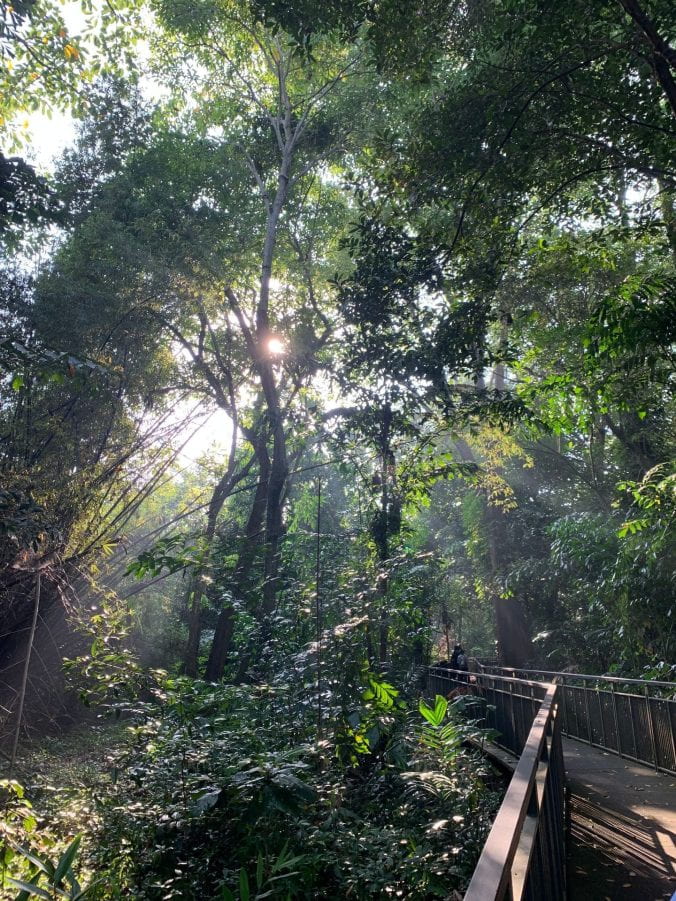Despite the government’s efforts to make Singapore a City in Nature, we cannot ignore the reality that Singapore is still a densely populated urban environment. Nature in Singapore is tightly controlled; the coasts are protected by seawalls, rivers are mostly canalized, and vegetation in parks is carefully planted and maintained. However, tucked up on the Northern coast of the island is the Sungei Buloh Wetland Reserve. A nature conservation area where nature has been allowed to run a little wilder and you can find a surprising array of flora and fauna. Recently, my classmates and I from GE3255: Aquatic, Riparian, and Coastal Systems had the chance to visit Sungei Buloh and get a close look at some of these fascinating plants and animals.
But Sungei Buloh hasn’t always been the wildlife haven we see today. The land was once used for intensive agriculture and most of the mangrove forests had been cleared to make way for prawn ponds. The area’s saving grace was a group of bird watchers who, in 1986, noticed that the mudflats were a vital ecosystem for migratory birds. They petitioned to have the area protected, and in 1993 the Sungei Buloh nature park officially opened. Sungei Buloh now supports a variety of wildlife and includes the largest mangrove forest in mainland Singapore!
Migratory Birds

A Pacific Golden Plover (Photo Credit: Mendis Tan, NParks Flora&FaunaWeb)
When you visit Sungei Buloh, make sure head to the Bird Observation Hide with a pair of binoculars to catch some of the birds that make a stopover here in Singapore! Sungei Buloh is a vital stop in the journey of many migratory birds such as the Common Redshank, Pacific Golden Plover, and the Common Sandpiper as they make their difficult journeys from far Eastern Russia and Alaska down to Australia and New Zealand. Some of the abandoned prawn ponds have been repurposed as tidal mudflats to provide habitats for these birds, and sluice gates keep the area open even at high tides.
Horseshoe Crabs
A visit to the mangroves at low tide offers a glimpse of the variety of wildlife that calls these mudflats home. This includes a variety of mudskippers, snails, and crabs, including the fascinating horseshoe crab, which has remained unchanged for more than 450 million years! Despite their name, they are more closely related to spiders and scorpions than crabs. These living fossils’ mouths are linked to their feet, and they need to walk to eat their food! Sungei Buloh is home to the mangrove horseshoe crab which grows to be about 15 cm across. It is slightly smaller than the other species of horseshoe crab found in Singapore, the coastal horseshoe crab, which grows to be about 25 cm across.
Saltwater Crocodiles

A saltwater crocodile sitting in the water at Sungei Buloh (Photo Credit: Gisela Grossman)
Sungei Buloh is also home to Estuarine Crocodiles! Also called Saltwater Crocodiles, these massive reptiles can grow up to 5 m in length and are one of the largest crocodiles in the world. They are apex predators, eating mostly fish as well as mammals and birds, and therefore their presence in the wetland reserve is indicative of a healthy ecosystem.
If you would like to get involved in helping to conserve and further restore the ecosystems at Sungei Buloh that support this amazing array of wildlife, be sure to check out NParks’ website to see the wide range of volunteer opportunities available!

Leave a Reply